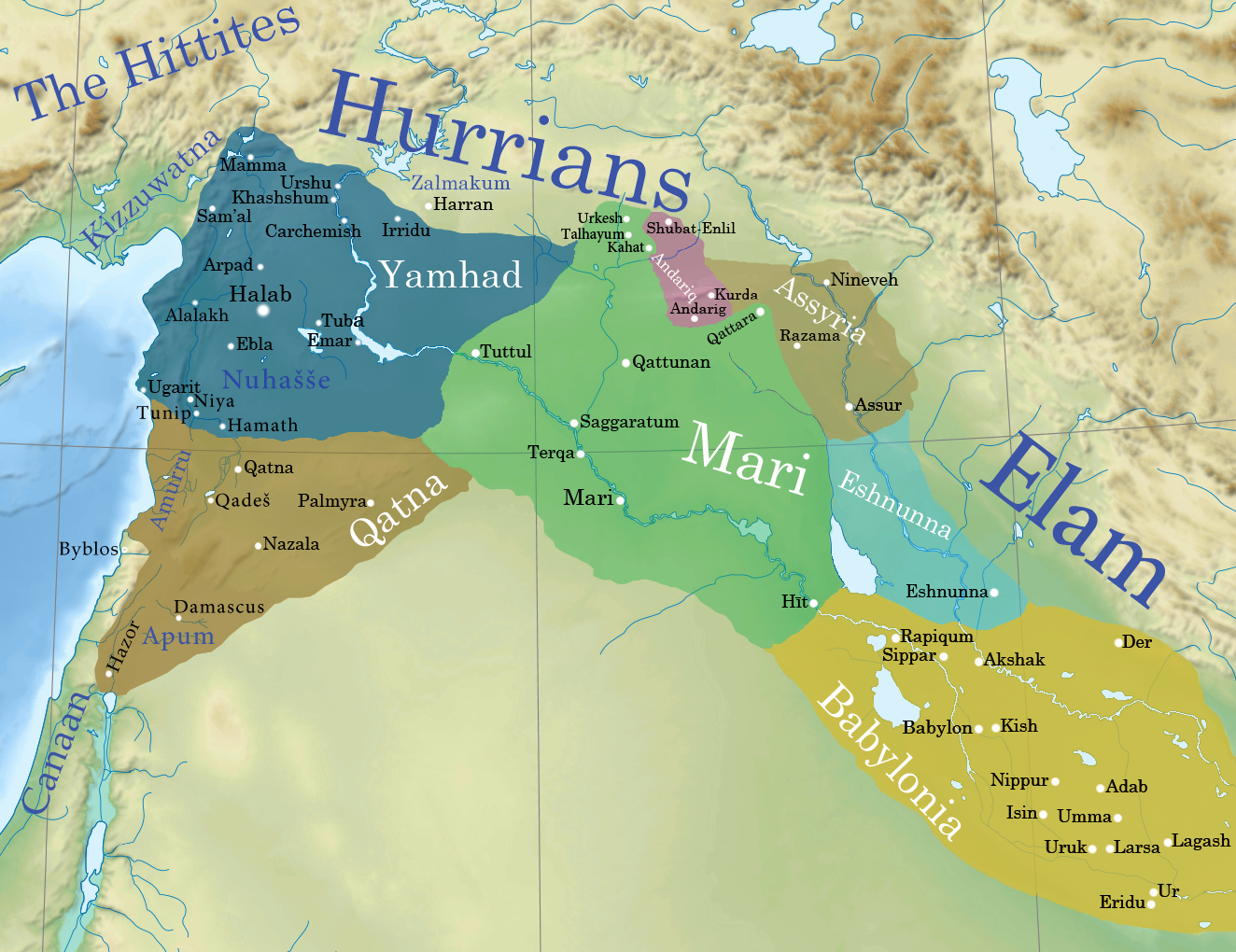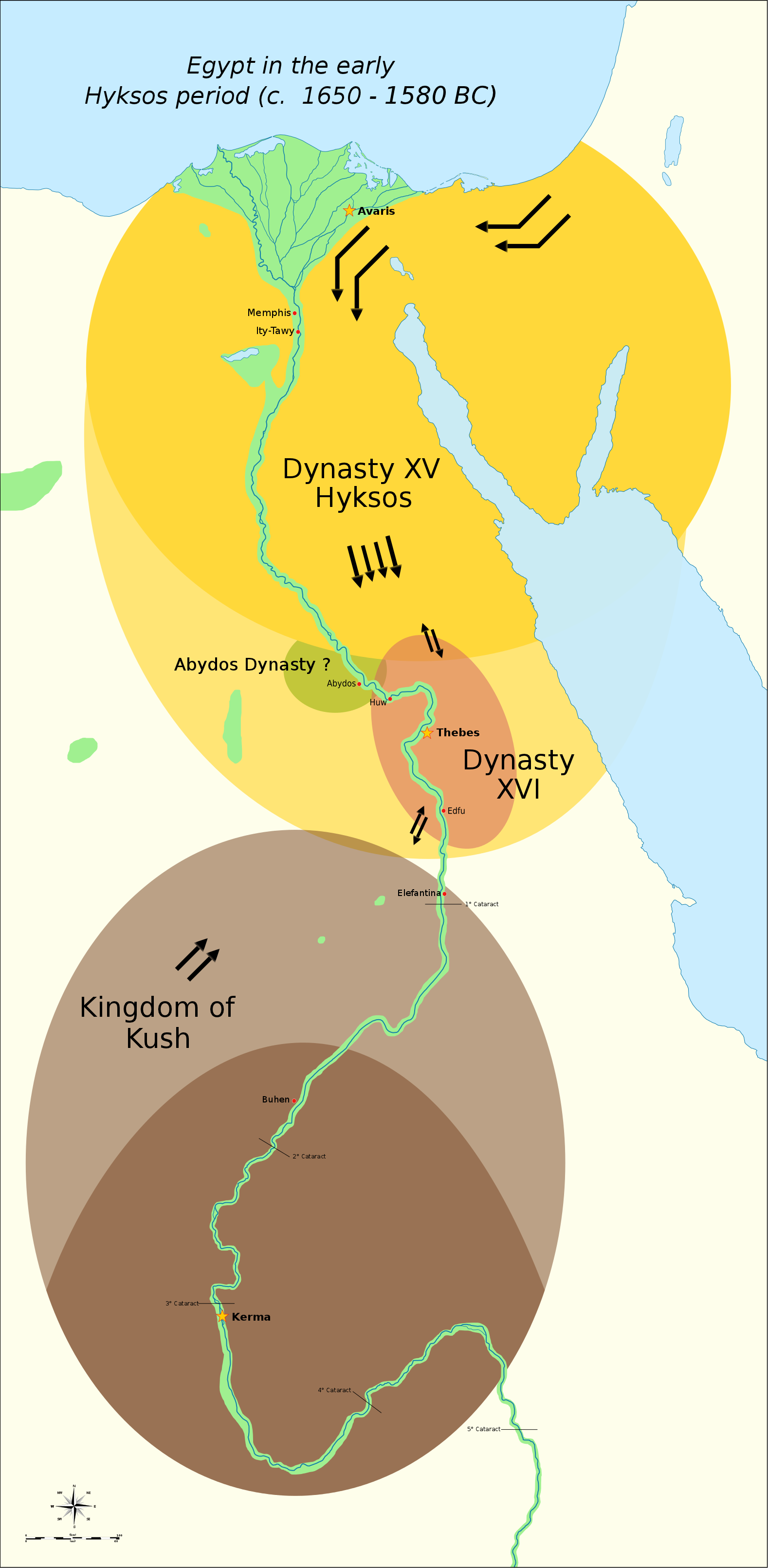|
Ila-kabkabu
The Amorite name Ila-kabkabu appears twice in the Assyrian King List: * Ila-kabkabu () appears within the Assyrian King List among the “kings whose fathers are known” (alongside both: Ila-kabkabu's father and predecessor, Yazkur-el; Ila-kabkabu's son and successor, Aminu), * Ila-kabkabu of Terqa is also mentioned as the father of one other king named within the Assyrian King List: Šamši-Adad I. Šamši-Adad I had not inherited the Assyrian throne from his father, but had instead been a conqueror. Ila-kabkabu had been an Amorite king not of Aššur (within Assyria), instead; Ila-kabkabu had been king of Terqa (within Syria) during the same time as that of the King Iagitlim of Mari (also within Syria.) According to the ''Mari Eponyms Chronicle'', Ila-kabkabu had seized Shuprum (possibly c. 1790 BC), then Šamši-Adad I had, “entered his father's house,” (e.g.. Šamši-Adad I had succeeded Ila-kabkabu as the king of Terqa, within the following year.):163 Šamši-Adad I h ... [...More Info...] [...Related Items...] OR: [Wikipedia] [Google] [Baidu] |
Mari, Syria
Mari (Cuneiform: , ''ma-riki'', modern Tell Hariri; ) was an ancient Semitic people, Semitic city-state in modern-day Syria. Its remains form a Tell (archaeology), tell 11 kilometers north-west of Abu Kamal on the Euphrates, Euphrates River western bank, some 120 kilometers southeast of Deir ez-Zor. It flourished as a trade center and hegemonic state between 2900 BC and 1759 BC. The city was built in the middle of the Euphrates trade routes between Sumer in the south and the Ebla, Eblaite kingdom and the Levant in the west. Mari was first abandoned in the middle of the 26th century BC but was rebuilt and became the capital of a hegemonic East Semitic languages, East Semitic state before 2500 BC. This second Mari engaged in a long war with its rival Ebla and is known for its strong affinity with Sumerian culture. It was destroyed in the 23rd century BC by the Akkadians, who allowed the city to be rebuilt and appointed a military governor (''Shakkanakku''). The ... [...More Info...] [...Related Items...] OR: [Wikipedia] [Google] [Baidu] |
Shamshi-Adad I
Shamshi-Adad (; Amorite: ''Shamshi-Addu''), ruled 1813–1776 BC, was an Amorite warlord and conqueror who had conquered lands across much of Syria, Anatolia, and Upper Mesopotamia.Some of the Mari letters addressed to Shamsi-Adad by his son can be found in the Mari Letters section of His capital was originally at Ekallatum and later moved to Šubat-Enlil. Rise Shamshi-Adad I inherited the throne in Ekallatum from Ila-kabkabu (fl. c. 1836 BC – c. 1833 BC). Ila-kabkabu is mentioned as the father of Shamshi-Adad I in the "Assyrian King List" (AKL); a similar name (not necessarily the same figure) is listed in the preceding section of the AKL among the “kings whose fathers are known”. However, Shamshi-Adad I did not inherit the Assyrian throne from his father but was instead a conqueror. Ila-kabkabu had been an Amorite king not of Assur (Aššur) (in Assyria) but of Ekallatum. According to the '' Mari Eponyms Chronicle'', Ila-kabkabu seized Shuprum (c. 1790 BC), then ... [...More Info...] [...Related Items...] OR: [Wikipedia] [Google] [Baidu] |
List Of Assyrian Kings
The king of Assyria (Akkadian language, Akkadian: , later ) was the ruler of the ancient Mesopotamian kingdom of Assyria, which was founded in the late 21st century BC and fell in the late 7th century BC. For much of its early history, Assyria was little more than a city-state, centered on the city Assur, but from the 14th century BC onwards, Assyria rose under a series of warrior kings to become one of the major political powers of the Ancient Near East, and in its last few centuries it dominated the region as the largest empire the world had seen thus far. Ancient Assyrian history is typically divided into the Old Assyrian Empire, Old, Middle Assyrian Empire, Middle and Neo-Assyrian Empire, Neo-Assyrian periods, all marked by ages of ascendancy and decline. The ancient Assyrians did not believe that their king was divine himself, but saw their ruler as the vicar of their principal deity, Ashur (god), Ashur, and as his chief representative on Earth. In their worldview, Assyria rep ... [...More Info...] [...Related Items...] OR: [Wikipedia] [Google] [Baidu] |
Sulili
Sulili () was according to the ''Assyrian King List'' (AKL) the 27th Assyrian monarch, ruling in Assyria's early period. He also appears within the Assyrian King List as the first out of the six kings “(whose names were written on?) bricks whose eponyms are (not known?)". Additionally, it is stated within the Assyrian King List that he was the successor of and “son of Aminu". Aminu had himself been the son of and successor of Ila-kabkabu, and Aminu and Ila-kabkabu were among the ten kings “who are ancestors". The section within the Assyrian King List “kings who are ancestors/whose fathers are known” (which, in contrast to the rest of the list, was written in reverse order, beginning with Aminu and ending with Apiashal), has often been interpreted as a list of Shamshi-Adad I's ancestors. In keeping with this assumption, scholars have inferred that the original form of the Assyrian King List had been written, among other things, as an “attempt to justify that Shamshi-A ... [...More Info...] [...Related Items...] OR: [Wikipedia] [Google] [Baidu] |
Assyrian King List
The king of Assyria (Akkadian language, Akkadian: , later ) was the ruler of the ancient Mesopotamian kingdom of Assyria, which was founded in the late 21st century BC and fell in the late 7th century BC. For much of its early history, Assyria was little more than a city-state, centered on the city Assur, but from the 14th century BC onwards, Assyria rose under a series of warrior kings to become one of the major political powers of the Ancient Near East, and in its last few centuries it dominated the region as the largest empire the world had seen thus far. Ancient Assyrian history is typically divided into the Old Assyrian Empire, Old, Middle Assyrian Empire, Middle and Neo-Assyrian Empire, Neo-Assyrian periods, all marked by ages of ascendancy and decline. The ancient Assyrians did not believe that their king was divine himself, but saw their ruler as the vicar of their principal deity, Ashur (god), Ashur, and as his chief representative on Earth. In their worldview, Assyria rep ... [...More Info...] [...Related Items...] OR: [Wikipedia] [Google] [Baidu] |
Aminu (Assyrian King)
Aminu () was according to the ''Assyrian King List'' (AKL) the 26th Assyrian monarch, ruling in Assyria's early period. Aminu is listed within a section of the AKL as the last of the, "''kings whose fathers are known''." This section (which in contrast to the rest of the list) had been written in reverse order—beginning with ''Aminu'' and ending with '' Apiashal'' “''altogether ten kings who are ancestors''”—and has often been interpreted as the list of ancestors of the Amorite '' Šamši-Adad I'' (''fl.'' ''c.'' 1809 BCE) who had conquered the city-state of '' Aššur''. This interpretation thus disputes that Aminu ever ruled Assur or Assyria. The AKL also states that ''Aminu'' had been both the son and successor of '' Ila-kabkabu''. Additionally, the AKL states that ''Aminu'' had been both the predecessor and father of '' Sulili''. The name "Aminu" is known from a seal of a servant, but this may not be a reference to the otherwise unattested Assyrian ruler, but instead to ... [...More Info...] [...Related Items...] OR: [Wikipedia] [Google] [Baidu] |
Iagitlim
Yaggid-lim (Iagitlim; c. 1830 BCE) was king of Mari, Syria during the 19th century BC. He was probably of Amorite origin. Little is known about his reign except that he came into conflict with his neighbour Ila-kabkabu of Terqa after the two had first been allies. Iagitlim was succeeded by his son Iakhdunlim Yahdun-Lim (or ''Yakhdunlim, Yahdunlim''; from Akkadian language, Akkadian ''ia-aḫ-du-un-li-im'', in Amorite language, Amorite ''Yaʿdun-lîm'') was the king of Mari, Syria, Mari probably in 1820—1796 BC. He was of Amorite origin, and became k .... References Amorite kings Kings of Mari 19th-century BC monarchs {{Syria-bio-stub ... [...More Info...] [...Related Items...] OR: [Wikipedia] [Google] [Baidu] |
Amorite
The Amorites () were an ancient Northwest Semitic-speaking Bronze Age people from the Levant. Initially appearing in Sumerian records c. 2500 BC, they expanded and ruled most of the Levant, Mesopotamia and parts of Egypt from the 21st century BC to the late 17th century BC. The Amorites established several prominent city-states in various locations, such as Isin, Kurda, Larsa, Mari, and Ebla, and later founded Babylon and the Old Babylonian Empire. They also founded the Fourteenth Dynasty of Egypt during the fragmented era of the Second Intermediate Period in the Nile Delta, which was characterized by rulers bearing Amorite names such as Yakbim Sekhaenre, and were likely part of the later Hyksos. The term in Akkadian and Sumerian texts refers to the Amorites, their principal deity, and an Amorite kingdom. The Amorites are mentioned in the Hebrew Bible as inhabitants of Canaan both before and after the conquest of the land under Joshua.van Seters, John, "The Terms 'Amori ... [...More Info...] [...Related Items...] OR: [Wikipedia] [Google] [Baidu] |
Timeline Of The Assyrian Empire
The timeline of ancient Assyria can be broken down into three main eras: the Old Assyrian period, Middle Assyrian Empire, and Neo-Assyrian Empire. Modern scholars typically also recognize an Early Assyrian period, Early period preceding the Old Assyrian period and a Post-imperial Assyria, post-imperial period succeeding the Neo-Assyrian period. Old Assyrian period, 2025–1364 BC Puzur-Ashur I (c. 2025 BC) is thought to have been the first independent ruler of Assur following the city's independence from the collapsing Third Dynasty of Ur, founding a royal dynasty which was to survive for eight generations (or 216 years) until Erishum II was overthrown by Shamshi-Adad I. Puzur-Ashur I's descendants left inscriptions mentioning him regarding the building of temples to gods such as Ashur, Adad and Ishtar in Assyria. The length of Puzur-Ashur I's reign is unknown. Hildegard Levy, writing in the Cambridge Ancient History, sees Puzur-Ashur I as part of a longer dynasty started by Suli ... [...More Info...] [...Related Items...] OR: [Wikipedia] [Google] [Baidu] |
Syria
Syria, officially the Syrian Arab Republic, is a country in West Asia located in the Eastern Mediterranean and the Levant. It borders the Mediterranean Sea to the west, Turkey to Syria–Turkey border, the north, Iraq to Iraq–Syria border, the east and southeast, Jordan to Jordan–Syria border, the south, and Israel and Lebanon to Lebanon–Syria border, the southwest. It is a republic under Syrian transitional government, a transitional government and comprises Governorates of Syria, 14 governorates. Damascus is the capital and largest city. With a population of 25 million across an area of , it is the List of countries and dependencies by population, 57th-most populous and List of countries and dependencies by area, 87th-largest country. The name "Syria" historically referred to a Syria (region), wider region. The modern state encompasses the sites of several ancient kingdoms and empires, including the Eblan civilization. Damascus was the seat of the Umayyad Caliphate and ... [...More Info...] [...Related Items...] OR: [Wikipedia] [Google] [Baidu] |
Cambridge Ancient History
''The Cambridge Ancient History'' is a multi-volume work of ancient history from Prehistory to Late Antiquity, published by Cambridge University Press. The first series, consisting of 12 volumes, was planned in 1919 by Irish historian J. B. Bury and published between 1924 and 1939, co-edited by Frank Adcock and Stanley Arthur Cook. The second series was published between 1970 and 2005, consisting of 14 volumes in 19 books. ''The Cambridge Ancient History'' is part of a larger series of works, along with '' The Cambridge Medieval History'' and '' The Cambridge Modern History'', intended to cover the entire history of European civilisation. In the original edition, it was the last in this series to appear, the first volume of the ''Modern History'' having been published in 1902, and the first volume of the ''Medieval History'' in 1911. In the second series, however, the ''Ancient History'' began to be published before the ''Medieval History''. First series # ''Egypt and Babylo ... [...More Info...] [...Related Items...] OR: [Wikipedia] [Google] [Baidu] |






